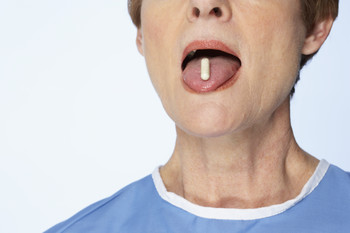Before there was any understanding of biochemical constituents, traditional herbal healing systems relied on flavors as indicators of medicinal properties. (Determining the properties and quality of an herb by its taste, color, texture, etc., is called “organoleptic” assessment.) Traditional herbalists have long associated corrective and potent therapeutic value intrinsic to the flavors, as follows:
Sweet – nourishing, tonic
Pungent or spicy — metabolically stimulating and warming
Salty – affecting body fluids
Sour – Promoting digestion (as with fermented foods)
Bitter – clearing, detoxifying
To these, Ayurveda adds “astringent” as a sixth flavor, while Traditional Chinese Medicine (TCM) adds “bland” another extra “non-flavor,” so to speak.
Flavors are perceived by taste receptors (taste buds) located on the upper surface of the tongue, soft palate, upper esophagus and epiglottis. The taste receptor cells send information to gustatory areas of the brain that influence our predilection or repugnance to certain foods.
Today, we know that the flavors are generally identified with known biochemical constituents. The bitter taste usually elicits a strong repugnance with the intention to protect us from non-nourishing and possibly poisonous substances. Biochemistry associated with the bitter flavor happens to include a large number of constituents with known therapeutic value such as alkaloids, bitter glycosides and so forth.
However, could it be that the bitter flavor itself, apart from its associated constituents, possesses its own intrinsic therapeutic value?
The well known traditional herbal principle of flavors may have found scientific vindication with this recent paper published in the Journal of the Federation of American Societies for Experimental Biology (FASEB) entitled “Extraoral Bitter Taste Receptors as Mediators of Off-target Drug Effects.” Here, a novel hypothesis offers a possible explanation as to why many drugs seem to affect conditions and diseases other than the ones which they are intended to treat:
“(W)e propose that any drug with a bitter taste could have unintended actions in the body through stimulation of extraoral type 2 taste receptors (T2Rs). T2Rs were first identified in the oral cavity, where they function as bitter taste receptors. However, recent findings indicate that they are also expressed outside the gustatory system, including in the gastrointestinal and respiratory systems. . . Bitter-tasting compounds can have specific physiological effects in T2R-expressing cells. . . . If our hypothesis is confirmed, it would offer a new paradigm for understanding the off-target actions of diverse drugs and could reveal potential new therapeutic targets.“
T2R taste receptors found in the gastrointestinal system may provide a rationale as to why and how bitter flavored herbs (often called “bitters” as they are sold in innumerable alcoholic beverages throughout the world) can be used to treat different physiological diseases. T2Rs found in the respiratory smooth muscle system affect breathing and bronchodilation, which may substantiate at least one aspect of how bitter tasting herbs such as wild cherry bark and elecampane are effective for asthma and other chronic and acute respiratory diseases.
Of course, the authors of this study did not set out to make a statement regarding the efficacy of the flavors associated with herbs, but their research may provide supporting evidence for how the flavor of an herb may direct its effects.
From an herbalist’s perspective, a drug may be viewed in terms of its pharmacological action and its overall metabolically heating or cooling energy. There are many implications with all of this; for example, we may not only understand off-label benefits of certain drugs, but we can also appreciate how certain drugs such as antibiotics, corticosteroids and others, while good for a specific disease, may be especially contraindicated and harmful for some patients more than others.
Given the fact that so many diseases are caused by excesses of all kinds including an excess of consumption of the non-nutritional sweet forms of food, we may now understand both through traditional medicine and science the old adage, “It’s time to drink your bitter brew.”

